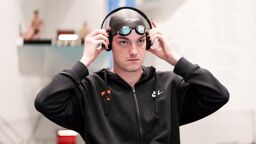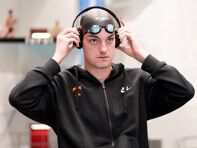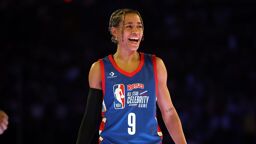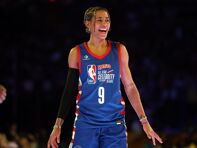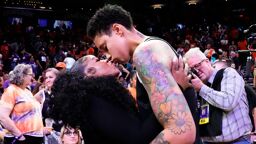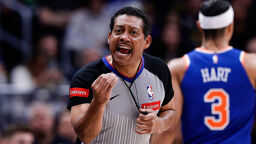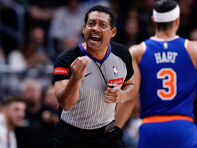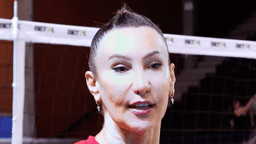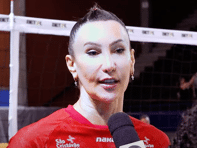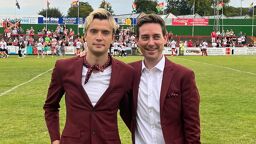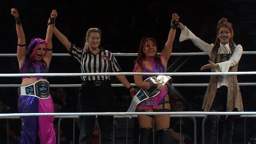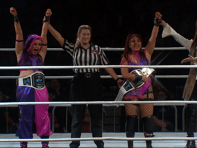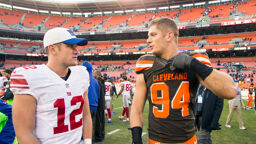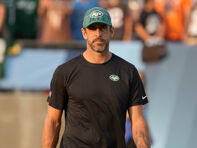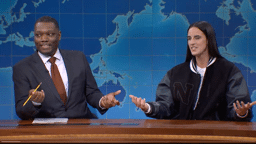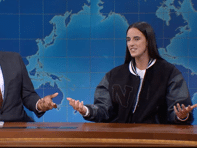(This story was published in 2002).
Recent strides have given hope that some in high places want the negative attitudes toward gays in sports to change: Stanford held a homophobia training program for varsity coaches last year; Harvard held a panel discussion including openly gay varsity athletes last spring; the NCAA hosted a discussion on homosexuality at their conference in January.
As many are frowning more and more on overt homophobia, it is the covert acts of many more that continue to keep gay athletes in the closet.
Two relevant events on swim teams at two very different colleges slipped under the radar recently, yet are indicative of the tacit homophobic attitude that keeps the closet doors of sports locked for so many.
Dave Lohse is an openly gay Associate Athletic Communications Director at the University of North Carolina in Chapel Hill. Two years ago, Dave sent out Christmas cards with a picture of himself and the women’s soccer team – ACC champions that year. Some of the members of the men’s swim team saw the cards and asked him when they’d get to be on his Christmas card.
That opportunity came this past December, with the blessing of the team’s head swimming coach, Frank Comfort. One day after practice, Dave, whom the entire team knows is gay, got a picture taken of himself, wearing a Santa hat, with some of the swimmers who wanted to be in the picture (left). For the caption, Lohse took an idea from one of the swimmers and wrote, “Hope your Xmas packages are as festive as mine!”
“Frank Comfort thought it was an exercise in diversity,” Lohse says. “The swimmers loved the card and every single one of them wanted a copy of the cards with the ‘package’ message.”
Two weeks later, Dave’s boss told him that the cards were inappropriate, that the school’s sexual harassment officer was looking into it, and that he could never send out a card with any UNC athlete on it.
|
“The whole thing turned something that was supposed to be a lot of fun and put a negative edge on it,” Lohse says.
No doubt, intent is hard to discern – and no one is going to admit today that homophobia played a role. But, the facts are clear: a gay man took a picture with the women’s soccer team and nothing was said; when that same gay man took a picture with the men’s swim team, he was told he could never do it again and a sexual harassment officer was brought in to investigate.
The athletic department used their fear of NCAA sanctions (the notion being that the players might be viewed as having endorsed something) as reasoning. Swim coach Frank Comfort thinks there is more to it than that: “I’ve got to believe subconsciously that the fact Dave is gay affected the administrative reaction. Just maybe not consciously.”
Kalamazoo College is a liberal arts college in Kalamazoo, Michigan, with an enrollment of about 1,400 undergraduate students. When you visit the Kalamazoo College Web site, their headlining motto reads: “Enlightened Leadership: Kalamazoo College in the 21st Century.”
Outsports recently received a request from Brian Miller, the Web master of the Kalamazoo College swimming page. Many months ago, we created a link to a photograph on their Web site of two swimmers flexing in their towel and Speedo in the locker room. Miller said in his e-mail that one of their alumni is “linked to from your page and they’re a little bent out of shape about it. Could you remove the link?”
When I clicked on the link, I was taken to a page with a demonic figure telling me that I should not be looking at that picture and that my entire “subnet” had been blocked; the Web master had gone ahead and blocked all of Outsports from looking at the picture.
We declined his request to remove the link.
We soon got an e-mail from Miller saying that, since we won’t remove the link, he would remove the photograph from the Internet entirely – he needed to protect the wishes of the athlete. While he removed that photo, he left up the dozens of other photos of swimmers hamming it up for the camera in their Speedos. In trying to understand why one of the swimmers objected to us simply linking to a page on which was a photograph of him (mind you, we weren’t “stealing” the photo, but simply linking to a page with it), we asked to speak, via e-mail or telephone, with him.
The swimmer has failed to respond.
As far as I can tell, he can have one of two reasons for wanting the link removed. First, he may himself be gay and is afraid that, being mentioned on a gay sports Web site, the “wrong” person stumbling across it may out him to friends and family.
This reason, though, is flawed. We have links on the site to pictures and stories of Brett Favre, Drew Bledsoe, Shaquille O’Neal and hundreds of other athletes. While there may be some wishful thinking about some of them, I’d be hard-pressed to find anyone claiming any of these three athletes, in particular, are gay; no athlete should feel his sexuality is questioned by a simple mention or link on our site.
The other possible reason I can think of is more probable and a bit more disturbing. It’s not just homophobia. Homophobia, much of the time, means that you don’t want to spend time with gay people, or you probably think their lifestyle isn’t right. This swimmer has taken it even further: he doesn’t even want gay people looking at him. Would he mind a women’s sports site linking to his photo? I suppose that, if a gay man were to see him coming at you on the street, he’d prefer that you close your eyes instead of smiling and wishing him a good day.
When asked several questions about the attitude toward homosexuality on the Kalamazoo swim team, Brian Miller emphasized that there was no homophobia on the team. However, when asked “Has the team, or the coaches, had open conversations with the rest of the team about homosexuality,” he said, simply, “no.”
And therein lies the problem. This covert homophobia is allowed to sit unsettled within athletes, coaches, and on teams with no recourse because so few people are challenging athletic departments and sports teams to actually talk about homosexuality. If sports is the last closet, the reason behind it is the people with the keys: the coaches, athletic directors and athletes who simply don’t want to talk about the issue.
Years ago, in high school, I was that gay kid that other kids teased. All through junior high school, “jocks” harassed me daily about being gay – though I didn’t even know at the time that I was. In high school, I excelled in athletics, setting school records in track, posting an undefeated record in the hurdles, and winning the school’s sportsman of the year award my senior year. As victories came in, the name calling subsided. I learned that sports helped me hide from the homophobia; but not from my own homosexuality.
Many boys try to bury their feelings for other boys in sports – be it football, basketball, track, or swimming. Most of them are met by their coaches and teammates with more homophobia than in society in general; and, despite their hopes, those feelings don’t go away. They dive deeper into the closet thanks to attitudes like these.
The NCAA is trying to make strides. They held an hour long panel discussion at their 2002 convention earlier in January. The panel included openly gay Oberlin College Athletic Director, Mike Muska. He said that as many as 90 percent of the coming out stories he has heard in college athletics are mishandled by coaches or fellow athletes. “We can’t say, ‘Oh, we don’t have a problem here’,” Muska told those in attendance. “Because we do.”
Until the coaches and student captains begin to take notice of what’s happening and decide that even covert homophobia isn’t OK, stories like the above will continue to happen
The motto emblazoned on Kalamazoo College’s Web site is, “Enlightened Leadership.” As long as administrators, coaches and athletes continue to view these covert events as enlightened, the closet doors of the sports world will remain locked.



